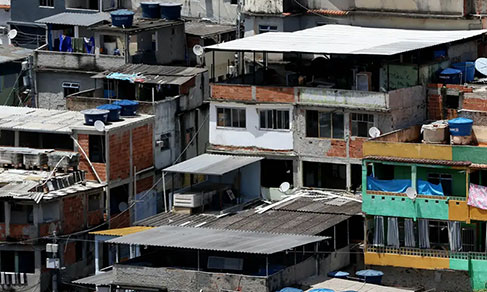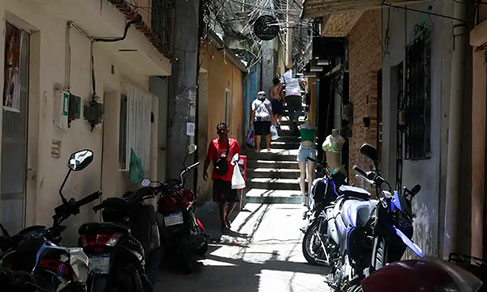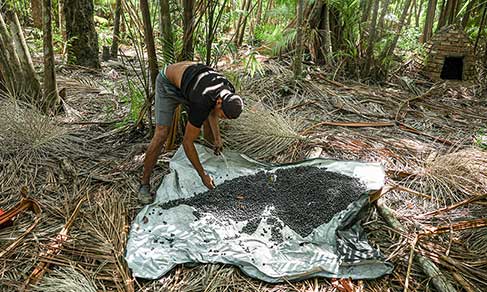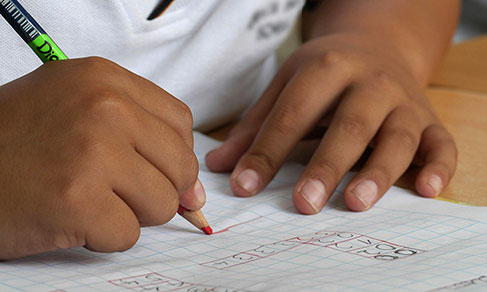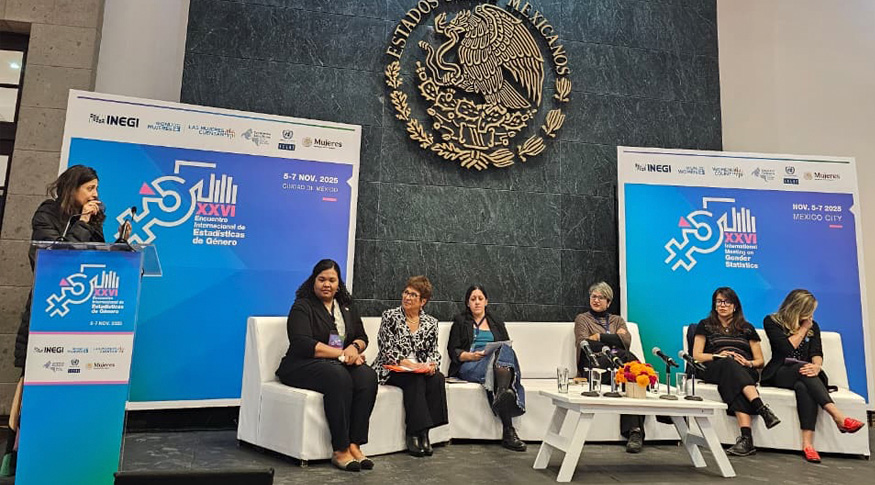2022 Census
2022 Census: 90% of the quilombolas in official territories suffer the effects of poor basic sanitation
July 19, 2024 10h00 AM | Last Updated: July 23, 2024 06h16 PM
Highlights
- In official Quilombola Territories, 90.02% of the quilombola residents live in areas with poor basic sanitation, either in terms of water supply, sewage disposal or waste disposal. For the quilombola population, this percentage reached 78.93%, whereas for the total population of the country, 27.28%.
- Considered simultaneously, 29.58% of the quilombola residents of Quilombola Territories face the three main forms of poor basic sanitation investigated. For the total quilombola population, the percentage was 21.89%, whereas 3.0% of the population in the country was in this situation.
- Inside Quilombola Territories, 33.61% of the quilombola residents used the "Public water supply system" as the main form of supply, 31.85% used "Deep or artesian well”, and 10.48% a "Shallow or ground water well".
- For the total quilombola population, these percentages reached 53.99%, 20.51% and 8.67%, respectively. The total population of Brazil recorded proportions of 82.89%, 8.95% and 3.20% for each of these forms of supply.
- For 66.71% of the quilombola residents of Quilombola Territories, water would come “Piped to the inside area of the house, apartment or housing unit.” For the total quilombola population this proportion reached 73.34%, whereas for Brazil as a whole, piped water up to the housing unit reached 95.14% of the population.
- In oficial Quilombola Territories, 18.21% reported not having piped water. This proportion falls to 12.97% for the total quilombola population and to 2.38% for the total resident population in Brazil.
- Considering the residents of quilombola territories, 24.77% (41,493) did not have a bathroom for exclusive use in the property; 12.99% (21,765) had Only “A toilet or hole for excrements, including those located on the land” and 6.24% (10.447) “Had no bathroom or toilet”.
- For 59.45% of the quilombolas living in official territories, the main type of sewage disposal was “Rudimentary cesspit or hole.” The public sewer system was a reality for only 6.53% of this population.
- Sewage disposal by means of public system or sceptic tank were the forms used by most of the resident population, with 75.74% of the population in this situation. For the quilombola population, the main forms of sewage disposal are rudimentary cesspit, hole, ditch, river, lake or sea or other, corresponding to a total 66.48%.

Unprecedented data from the 2022 Population Census show that, either in or out of official Quilombola residents, the housing units with at least one quilombola resident are more susceptible to sanitation deficiencies. In Quilombolas Territories, the proportion of quilombolas living in housing units with more precarious or absence of basic sanitation, in terms of water supply, sewage disposal or waste disposal. For the total quilombola population, this percentage reached 78.93%, whereas, for the total resident population, 27.28%.
These data were released today (19) by the IBGE in the “2022 Population Census - Quilombolas: Characteristics of housing units and literacy, by specific territories: Population results.” Another release was “2022 Population Census: Quilombolas Localities”. The release event will be held today, at 10 am, at Escola Municipal de Tempo Integral Negro Cosme (a full-time school), in the neighborhood of Liberdade, in São Luís (MA). The release will be streamed live on Digital IBGE.
Read also about literacy among the quilombola population and about quilombola localities.
In order to keep more similar the items surveyed in the Population Census and the classification proposed by the national Plan of Basic Sanitation (PLANSAB), the IBGE considered as poor the following conditions:
- The main form of water supply is by means of the public system, well, source or spring with water piped up to the land or no piped water, and cases in which, either piped or not, water comes from a water tanker truck, stored rainwater, rivers, lakes, streams, creeks or other forms not previously mentioned;
- The form of sewage disposal is rudimentary cesspit, hole, ditch, river, creek, sea of other;
- Waste is not directly or indirectly taken by collection services;
In Quilombola Territories, 29.58% of the quilombola residents experienced the three conditions simultaneously. For the total quilombola population, the percentage was 21.89%, whereas 3.0% of the resident population in the country was in this condition.
“It is important to point out that the National Plan of Basic Sanitation makes a difference between some aspects of sanitation adequacy by urban or rural location. This comparison based on the 2022 Census is a piece of information which is still being analyzed and will provide an even more complete view of the data presented in the current publication, when available,” says Fernando Damasco, IBGE manager for Traditional Territories and Protected Areas.
Quilombola Territories are more dependent of the well structure for water supply
Although the three forms of water supply are the same for the total population in the country and the quilombola population, the proportion of use is different. In Quilombola territories, 33.61% of the quilombola residents used the "Public water supply system” as the main form of supply; 31.85% used "Deep or artesian well", whereas 10.48% used " Shallow or ground water well. "
For the total quilombola population, these percentages were of 53.99%, 20.51% and 8.67%, respectively. The total resident population in Brazil registered proportions of 82.9%, 8.95% and 3.20% for these three forms of supply.
“Supply of water in housing units of Quilombola territories is more dependent on the structure of wells. The categories deep or artesian well and shallow or ground water well are the main forms of supply for 42.33% of the residents of quilombola territories, a percentage significantly higher than the same analysis for the total quilombola population, 29.18%, and for the total resident population in the country, 12.15%,” says Marta Antunes, coordinator for the Census of Traditional Peoples and Communities.

As for water piping, for 66.71% of the quilombolas in Quilombola Territories, water would be “Piped to the inside area of the house, apartment or housing unit,” that is, for this parcel of the population, water would be accessible from faucets, showers, toilets, etc. for the population overall, this proportion reached 73.34%, whereas for Brazil as a whole, piped water reaching the housing unit covered 95.14% of the population.
For 15.07% of the quilombola residents of Quilombola Territories, water would come “Piped, piped up to the land”, a proportion that fell to 13.70% when considering the total quilombola population and to 2.47% considering the resident population of the country.
The condition “Without piped water”, that is, when water needs to be transported in buckets, jars, vehicles or other containers, was more significant in relation to others in Quilombola Territories, covering 18.21% of the quilombola residents. This proportion fell to 12.97% for the total quilombola population and to 2.38% for the total resident population in Brazil.
One out of four quilombolas in official territories did not have a bathroom for exclusive use in the housing unit
As for the existence of bathrooms and toilets in housing units, the 2022 Census investigated four situations: those that had a bathroom (a room with a toilet and bath or shower fixture) of exclusive use (used only by the residents and their guests); the residents use bathrooms shared by more than one housing unit; they use “Toilets or holes for excrements”, either shared or not, including those located on the same land; and those that did not have bathrooms, toilets or holes for excrements, indicating the existence of open defecation.
Considering quilombola residents in officially delimited territories, 24.77% (41,493) did not have a bathroom for exclusive use in the housing units. And 5.54% of these (9,281) had “Only one bathroom used by more than one housing unit”; 12.99% (21,765) had “Only a toilet or hole for excrements, including those located on the land”; and 6.24% (10,447) “Had no bathroom or toilet.”
For the total quilombola population, 17.15% (227,667) live in housing units that do not have an exclusive bathroom, with 3,35% (44,516) depending on bathrooms shared by more than one housing unit, 9.75% (129,364) had only one toilet or hole for excrements and 4.05% (53,787) did not have either a bathroom or a toilet. For the total resident population in the country, the proportions were 2.25, 0.50%, 1.16% and 0.59%.
Main form of sewage disposal used by the quilombolas was rudimentary cesspit or hole
For 59.45% of the quilombola residents in official territories, the main type of sewage disposal in housing units was “Rudimentary cesspit or hole”. “Septic tank of filter tank not connected to the public system” was the second main form, adopted by 17.44% of the residents, followed by absence of bathroom or toilet, for 6.24%. The public sewer system reached Only 6.53% of this population.
Considering the entire quilombola population, the main forms of sewage disposal were “Rudimentary cesspit or hole” (57.67%), “Septic tank of filter tank not connected to the public system” (14.99%), “Public sewer system, river, or tank connected to the public sewer system” (14.48%) and "Absence of bathroom or toilet” (4.05%).
The situation of the quilombola population, total and both in and out of the territories, differs from the resident population as a whole. For this total, the main type of sewage disposal for 62.51% of the population was “Public sewer system, river or cesspit connected to the public system”, followed by “Rudimentary cesspit or hole” (19.44%) and “Septic tank or filter tank not connected to the public sewer system” (13.23%).
“In a more aggregated way, whereas sewage disposal for the resident population is mostly in the category public sewer system, septic tank of filter tank, with 75.74% of the population in this situation, for quilombola residents the main form of disposal is rudimentary cesspit, hole, ditch, river, creek, sea or other, corresponding to 66.48% of the quilombola residents,” Marta Antunes explains.

Waste disposal is a reality for only 30% of the quilombolas in official territories
Considering waste disposal, the main form reported by resident quilombolas of Quilombola Territories was “burned in the property” (65.49%). For other 30.49% of the quilombola residents, waste was directly or indirectly taken by collection services.
For the total quilombolas, waste taken directly or indirectly reaches more than half of the residents (51.28%). Waste burned in the property remains as the main form of disposal for 45.74% of the quilombola population.
For the resident population in the country, direct or indirect collection services are much more present, reaching 90.89% of the persons. For 7.88% of the total population, trash was burned in the housing unit.
“It is necessary to understand that “adequate” sanitation changes according to the location in urban or rural contexts. PLANSAB recognizes the specificities of complementary sanitation solutions in rural areas such as the use of stored in cisterns and internal piping. As for waste disposal in rural contexts, for example, indirect waste disposal with lower frequency and proper environmental is considered adequate, which is not true in urban areas. In spite of this limitation, the data evidence the higher vulnerability of quilombolas to poor sanitation conditions or complete absence of basic sanitation,” Fernando Damasco explains.
More about the survey
The Population Census is the most complete statistical operation in the country, covering all the 5,570 Brazilian municipalities. The first results of the 2022 Population Census for quilombolas were released in July 2023 and are available on the IBGE News Agency. Asecond round of results was released in December the same year, and counted 1,330,186 quilombolas in 25 Federation Units. In May 2024, demography for the quilombola population in Brazil was inaugurated, with releases of analyses by sex and age.
The publication “2002 Population Census: characteristics of housing units and literacy, by specific territories – population results” presents information such as sanitation conditions of housing units with at least one quilombola residents, in and out of official Quilombola for Brazil, Federation Units, Municipalities, Legal Amazon by Federation Units, official Quilombola Territories and Quilombola territories by Federation Units.
The data are also available at the Interactive Geographic Platform (PGI), (PGI), the 2022 Census Overview and Sidra.



